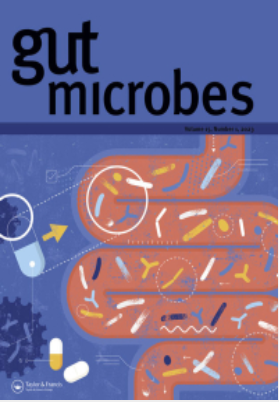Epidemiology of bacterial biofilms on polyps and normal tissues in a screening colonoscopy cohort.
IF 12.2
1区 医学
Q1 GASTROENTEROLOGY & HEPATOLOGY
引用次数: 0
Abstract
BACKGROUND Invasive bacterial biofilms are implicated in colorectal cancer. However, their prevalence on histologically normal tissues and polyps is not well established, and risk factors of biofilms have not been previously investigated. Here we evaluated potential procedural and demographic risk factors associated with biofilm status using a cross-sectional observational cohort. METHODS Histologically normal colonic biopsies from 2,051 individuals undergoing screening colonoscopy were evaluated for biofilm status using fluorescence in situ hybridization with oligonucleotide probes targeting bacterial 16S rRNA. Polyp tissues from 21 individuals were also examined. Procedural, demographic, and lifestyle predictors of bacterial scores were evaluated using multivariable proportional odds regression models. RESULTS Procedural variables that negatively impacted bacterial scores and biofilm detection included smaller biopsy forcep size, physician, bowel preparation type, and shorter times from bowel preparation completion to colonoscopy. Lifestyle variables including greater alcohol and cigarette usage were associated with higher bacterial scores, while vigorous physical activity and diabetes mellitus were associated with lower bacterial scores. Bacterial scores on normal tissues were significantly higher in individuals with colorectal cancer but not polyps compared to dysplasia-free individuals. Direct examination of polyp tissues demonstrated similar bacterial burden and taxonomic composition compared to paired normal tissues, but polyps displayed enhanced bacterial invasion into crypts. Additionally, bacterial scores significantly correlated with increasing polyp size, suggesting co-evolution of polyps with bacterial invasion and biofilm status. CONCLUSIONS Colonic biofilms are highly dynamic ecosystems that associate with several other known risk factors for colorectal cancer. However, biofilm detection is impacted by multiple procedural factors.结肠镜筛查队列中息肉和正常组织细菌生物膜的流行病学。
背景:侵袭性细菌生物膜与结直肠癌有关。然而,它们在组织学正常组织和息肉中的患病率尚未得到很好的确定,生物膜的危险因素也未被研究过。在这里,我们使用横断面观察队列评估与生物膜状态相关的潜在程序和人口危险因素。方法采用针对细菌16S rRNA的寡核苷酸探针荧光原位杂交技术,对2051例接受结肠镜筛查的正常结肠活检组织进行生物膜状态评估。同时对21例患者的息肉组织进行了检查。使用多变量比例odds回归模型评估细菌评分的程序、人口统计学和生活方式预测因子。结果对细菌评分和生物膜检测产生负面影响的程序变量包括较小的活检钳大小、医生、肠准备类型以及从肠准备完成到结肠镜检查的较短时间。包括大量饮酒和吸烟在内的生活方式变量与较高的细菌得分相关,而剧烈运动和糖尿病与较低的细菌得分相关。与没有发育不良的人相比,结直肠癌患者正常组织的细菌评分明显更高,而息肉患者则没有。与配对的正常组织相比,直接检查息肉组织显示出相似的细菌负荷和分类组成,但息肉显示出增强的细菌侵入隐窝。此外,细菌评分与息肉大小的增加显著相关,表明息肉与细菌入侵和生物膜状态共同进化。结论结肠生物膜是一个高度动态的生态系统,它与其他几个已知的结直肠癌危险因素有关。然而,生物膜检测受到多种程序性因素的影响。
本文章由计算机程序翻译,如有差异,请以英文原文为准。
求助全文
约1分钟内获得全文
求助全文
来源期刊

Gut Microbes
Medicine-Microbiology (medical)
CiteScore
18.20
自引率
3.30%
发文量
196
审稿时长
10 weeks
期刊介绍:
The intestinal microbiota plays a crucial role in human physiology, influencing various aspects of health and disease such as nutrition, obesity, brain function, allergic responses, immunity, inflammatory bowel disease, irritable bowel syndrome, cancer development, cardiac disease, liver disease, and more.
Gut Microbes serves as a platform for showcasing and discussing state-of-the-art research related to the microorganisms present in the intestine. The journal emphasizes mechanistic and cause-and-effect studies. Additionally, it has a counterpart, Gut Microbes Reports, which places a greater focus on emerging topics and comparative and incremental studies.
 求助内容:
求助内容: 应助结果提醒方式:
应助结果提醒方式:


